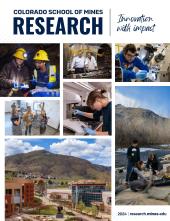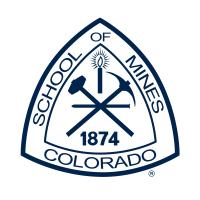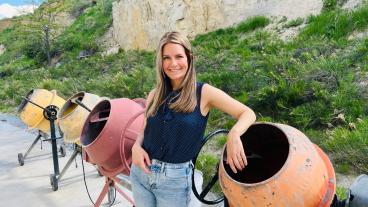Mines’ research leaders discuss the university’s legacy of innovation and societal value


Since its founding in 1874, Mines has been a beacon of innovation and research excellence. To celebrate and reflect on the university’s research accomplishments during the institution’s anniversary year, Vice President for Research and Technology Transfer Walter Copan brought together the three former VPRTTs -- John Poate, Tony Dean and Stefanie Tompkins -- for a discussion about how research at Mines has grown and evolved over the years, the value of embracing change and the importance of cultivating strong research partnerships and a robust research community.
Here are some highlights from the conversation:
Copan: John, without your work to establish a formalized office of research and tech transfer (RTT) at Mines, none of us would be here today. Can you tell us about how the RTT office came about and how its initial goals have helped to lay the groundwork for RTT at Mines today?
Poate: Being the first vice president at Mines was a great privilege. I came to Mines in 2006, and the goal was to enhance research and tech transfer at Mines. That was the time when a lot of universities were setting up their research offices. I had a really enjoyable time getting to know the faculty and trying to analyze the school and where we were going. The goal of the office was to work with the faculty and identify the areas where we could playin the major leagues. We had our first big win in 2008 with a National Science Foundation materials science award. Then in 2011, we had the Engineering Research Center—that’s a very big center from the NSF—for the water initiative. Finally, of course, in 2012, we won the DOE hub for the Critical Materials Institute. In many ways, that put us on the national research map, but to my mind, the very important thing there was that it was proof to the faculty that we could play in the major leagues and win. Of course, that was just the research agenda—there was so much other stuff going on. In 2008, we hired the tech transfer director—that was Will Vaughan—and the goal there was to clearly enhance our commercial presence. Getting that office up and running was a lot of work—understanding the research profiles, the commercial agenda—but look at what’s come to fruition now.
Copan: Stefanie, one of the most significant areas of focus when you were VPRTT at Mines was the push toward greater external recognition of what Mines insiders have long known—that we are a top-choice partner solving real-world problems. Much of our research is use-inspired, and our connections to industry, the federal labs, other universities, decision-makers in Washington, D.C., all inform and drive our research endeavors. Can you give us some insight on your efforts to bring this message to a broader audience while you were VPRTT?
Tompkins: When you talk about bringing a message forward, there are two different things you can think about: one is talking the talk, and the other is walking the walk. We really wanted to concentrate on the latter part initially, so I spent a lot of time talking to faculty and asking what the barriers were for them to be able to take on these much bigger projects, which is effectively the best way to communicate what Mines is capable of doing.
We spent a lot of time concentrating on breaking down those barriers. It was simple things like hiring someone full time to do nothing but help with complex, multi-institution, multidisciplinary proposals. That young woman, in the first quarter she was here, I think she earned her salary back over 10 or 20 times in terms of funding that was won by the university. We spent a lot of time talking to Congress. There are some really interesting rules in places like the Department of Energy that demand that universities provide cost share for federal funding that they win. We had to work with Congress and said this is fundamentally going against what theUnited States wants—you’re actually discouraging people from trying to do their best work because they can’t afford to, and that seemed like a fatal flaw in the system. We were able to get Colorado’s delegation to work together to actually suspend that requirement for universities and for nonprofit institute organizations. It’s this sort of bottoms-up approach that allows the university to take on much bigger and bolder initiatives, some of which might be top-down or coming from unexpected external partners.
Copan: In addition to our very strong ties to industry and to other collaborators, we are dramatically growing our entrepreneurial and innovation ecosystem at the university. I’m curious for your thoughts on how building a cohesive research community enables advancement and how we cultivate the idea of innovation with impact at Mines.
Dean: Most of us, when we think of scientists and researchers, we want to do two things: we want to understand things in a better way, but more importantly, the reason we do it is because we want to make an impact. I think that’s why we’re finding the growth of entrepreneurial things now—on some level, it’s just kind of a natural outgrowth of being in a position to improve society in one way, shape or form. The nice thing about it now is that there are many more structures in place to effectively smooth that type of transition. I think that’s one of the critical roles of your office right now, having the luxury of being in the position where it’s become a well-oiled machine, and what better way to attract young faculty members and see they can come to a place to favorably impact society. It’s an absolute win-win situation.
*Responses have been edited and condensed for length and clarity.
Watch the full discussion on Mines' YouTube channel: https://www.youtube.com/watch?v=Q8WXNec_WBQ




